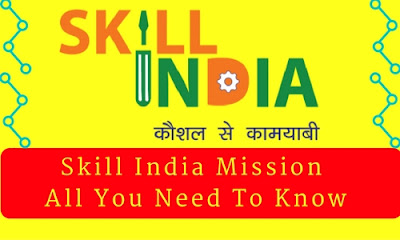Introduction
Skill India mission is a long-term strategy to address the shortage of skilled persons and promote faster, inclusive and sustainable growth.
Important facts
- Boston Consultancy Group (BCG) has predicted that by 2020 there will be shortage of 47 million working people in the rest of the world
- There is a skill gap between employment and employability with 56 percent school drop outs with employers finding a skill shortage of 53 percent
- 66 percent (883 million) of Indian population will be in the working age group of less than 35 by 2020 according to Twelfth plan
- Considering the demographic dividend, India will have an advantage over China from the year 2015
- India will have a surplus of 56 million skilled people by 2020 as a result of the Skill India campaign
Nodal Agencies
- National Skill Development corporation
- Ministry of Finance
- Ministry of Skill Development and Entrepreneurship
Funding
- Funding based on PPP mode
- GOI Stake 49%
- Industry stake 51%
- Private participation more than government
Beneficiaries
- Unorganized sector employees
- Unemployed youth
- School drop outs
- Male employees in unorganized sector
- Female employees in unorganized sector
Elements of Skill Development
- Motivation – Trainer and Student
- Fresher training
- Re-Skilling
- Integration
- Recognizing
- Funding
- Monitoring
- MIS
- Aadhar Card linkage
- Rational outlook
- Assessment of increase in income productivity as a result of skilled labor
- New schemes are devised and released under Skill India Mission like Pradhan Mantri Kaushal Vikas Yojana
Challenges
- Magnitude – NSDC requirement of 12 crore skilled manpower in 24 key sectors by 2022
- High order skill sets of efficiency, diverse and geographically suited
- Target demography of different educational and class backgrounds
- Perception – vocational and regular courses
- Integration to fix demand-supply gap
- Lack of labour management system
- Lack of mobility
- Minimal industry role
- Less social acceptability
- Quality of skill development and training programs at stake with lack of infrastructure
- Enrollment in Skill development programs needs awareness among rural masses
Conclusion
- Skill India Mission is projected to improve the skills of the Indian workforce
- Skill India Mission will make skilled labour a competitive advantage among world nations
- Nearly 833 million of unorganised labour will be trained and placed in industry
- India will emerge as the skill capital of the entire world supplying skilled labor force to the developed nations
- The demand for skilled Indians abroad is going to increase from 2015 after the ageing problem starts in China
- Skilled workforce will increase the output in the industry both domestic and foreign
- Skilled people will help save time and increase the efficiency
- A new skill development department will be created resulting in the creation of more jobs in the formal sectorOverall, Skill India mission is a long term strategy initiated by GOI through an umbrella of schemes aimed at developing India as a skilled super power in the entire world






